Deaf children of our time
- Published
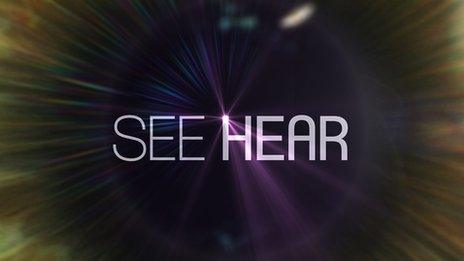
Of the many projects I've worked on since joining the BBC's long-running show for deaf people, See Hear's Child of our Time is a personal favourite.
We were, of course, inspired by Robert Winston's BBC series which has followed 25 children since their births in 2000, as well as ITV's Up documentaries, which have visited 14 people every seven years since 1964, when they were aged just seven.
In 2007 I was tasked with finding four deaf primary school starters from a range of backgrounds, so we could follow their educational journeys and maybe shed some light on these issues.
There were many debates around deaf education in 2007 when we first broadcast our version of the programme - and they continue today. They ranged from opposition to deaf children being given cochlear implants, to deaf schools being closed in favour of mainstreaming, and discussions on whether it was better for deaf children to speak or sign or do both from an early age.
I found Lucy, Aidan, Yasin and Amie, all of whom were four years old. They had unique personalities and were representative of different family backgrounds, communication styles and hearing levels. Seven years later, it's 2014 and we are returning to see how they're getting on now they are 10.
Lucy
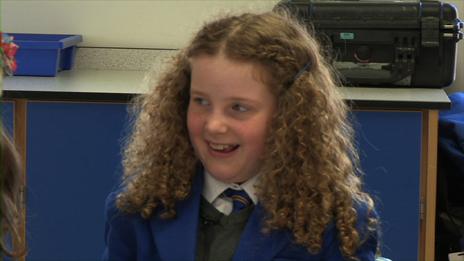
Lucy was born to deaf parents in a strong signing household. When we met her, she was in the reception class at Heathlands deaf school. She had thick blonde curls and a mischievous twinkle in her eye. At four she was already a fluent signer and was really attentive in the classroom, hanging on the teacher's every sign.
Seven years later she is still signing thanks to support around her, has become a confident swimmer and hopes to compete in the Deaflympics one day. She still has the same twinkle in her eye.
Aidan
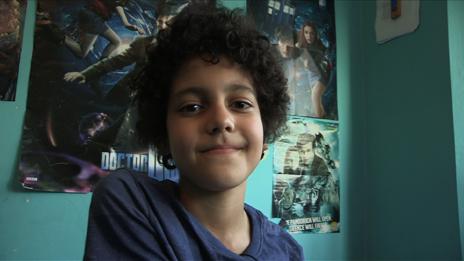
Aidan was born to hearing parents, both of whom used speech to communicate with him. When we met him in a 2008 update, his mum Donna was attending regular classes so that she could also speak with him using sign language. He wore a cochlear implant in one ear and also a hearing aid, and communicated with a mixture of sign language and speech. He was a real bundle of energy. He started his education at a school for deaf children but now attends a small mainstream primary.
Aidan has since been diagnosed with verbal dyspraxia, a condition where a person has trouble saying what he or she wants to. But he has overcome this and is now confident both with speaking and signing. He seems more at ease in the deaf world than in previous years. He pours all that excess energy into performing in rock bands and with the inclusively-run Chicken Shed theatre company for young people with and without disabilities.
Amie
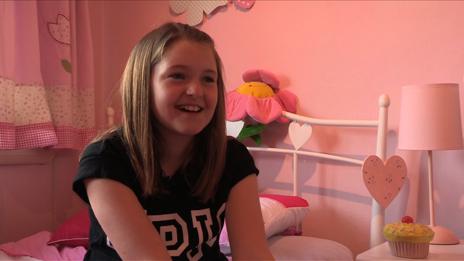
Like Aidan, Amie was born to hearing parents and grew up using a mix of speech and sign to communicate. She had a cochlear implant in one ear and went to a school with a deaf unit. We saw her being very confident and sociable from an early age, whether in the classroom or in the playground. She seemed to prefer speaking to signing.
Amie is now becoming more and more comfortable in the hearing world, to the extent where she is learning the violin. Her speech has become clear enough for her to stop attending speech therapy sessions and she hopes to go on to a mainstream girls' school. Amie has a cochlear implant in both ears now, as has Aidan, but they've had differing results since having the second one fitted.
Yasin
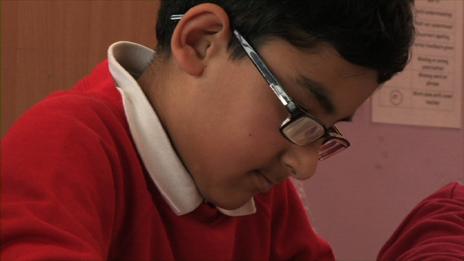
Yasin was born in Birmingham. His mum Razia chose to speak rather than sign with him from very early on, to make him master hearing with his cochlear implant. He went to a mainstream school. When we first met Yasin, it was remarkable how little his deafness seemed to affect him. Whether his mum was calling the names of different fruit out behind his back (so he couldn't see her lip movements), or taking us on a tour of his bedroom, he seemed to really understand the words he heard spoken aloud.
These days, Yasin plays the trumpet in a band and hopes to attend a local mainstream secondary school. His speech is more or less indistinguishable from that of a hearing child of the same age.
Changing deaf world
In our updates this week and next, we'll see how much all four have grown, both physically and as individuals over the last seven years.
Since first meeting Lucy, Aidan, Amie and Yasin we've seen governments change, educational policies change and more deaf schools close.
We've seen huge rises in the use of social media by deaf people, also online video communication and other internet innovations. Its impact has been profound.
The four children live in a world which is more accessible than it was seven years ago, but also a world of austerity and benefit cuts.
But what have we learned?
Have we solved any of the debates about sign v speech, whether cochlear implants work or not, whether deaf children should be mainstreamed or kept in deaf schools? We hope to shed some light on this.
Email us atseehear@bbc.co.uk with your stories and comments, like our Facebook page, external and enjoy watching our programme.
Follow @BBCOuch, external on Twitter and on Facebook, external, and listen to our monthly talk show